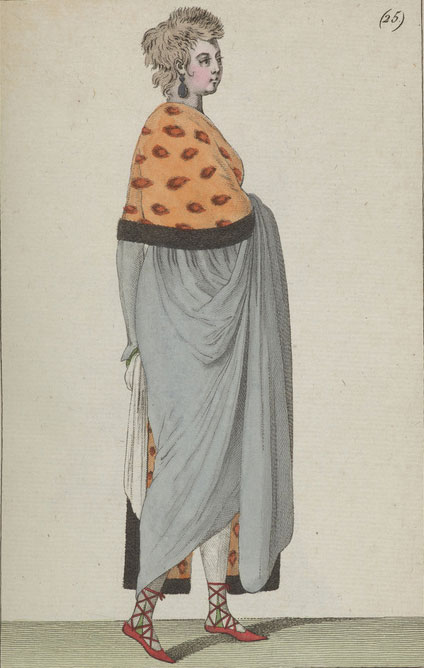 The Morgan’s collection of prints includes an extremely rare set of the world’s most radical fashion plates. Recently rediscovered, these revolutionary 1797–1804 pictures from the Journal des Dames et des Modes, in exceptionally good condition, have been digitized and edited in a website.
The Morgan’s collection of prints includes an extremely rare set of the world’s most radical fashion plates. Recently rediscovered, these revolutionary 1797–1804 pictures from the Journal des Dames et des Modes, in exceptionally good condition, have been digitized and edited in a website.
Thanks to a collaboration between the Morgan and the Columbia University Library, all of the 1797–1804 plates are available for the first time in their entirety. Maps, a timeline, a macroscope, essays, color guides and clothing glossaries explain the plates’ significance. In addition, the DesignMuseum Danmark in Copenhagen, holder of the only known complete surviving text for this period in a public collection, has agreed to digitize the accompanying text. Soon, therefore, the Morgan’s plates will be reunited with the lively descriptions and articles that make them even more historically remarkable.
Meanwhile, a group of Barnard College students has created an Instagram to showcase the Morgan’s plates in a contemporary idiom. Besides modeling recreated 1797–1804 looks on their fellow-students, the Instagram will feature posts on topics such as red victim-ribbons, the absence of undergarments, and recurring revivals of the Journal’s style innovations.
The French Revolution of 1789 promised that women and men could completely reinvent themselves, with the help of a total style transformation. Between 1797 and 1804, after the political crisis of the first revolutionary years and before Napoleon became Emperor, the Journal des dames et des modes showed Europeans and North Americans how to look, read, and entertain themselves as modern individuals. It rejected the dress rules and materials that had signaled static social rank in favor of mobile and sexual self-expression through consumer choice. Women turned their underwear into outerwear, cropped their hair, and invented the handbag. Men gave up embroidery, lace, and silks in exchange for the suits and tailoring they have worn ever since. For women, however, this style revolution was considered too radical, and began to be reversed after 1804.
Anne Higonnet is Professor of Art History at Barnard College, Columbia University. A 1980 Harvard College B.A, she received her PhD from Yale University in 1988. Her work has been supported by Getty, Guggenheim, and Social Science Research Council fellowships, as well as by grants from the Mellon, Howard and Kress Foundations. She has published many books and essays on art since 1750, both in print and online, and lectures widely to public audiences, including at the Met. Her current project is the direction of Style Revolution.
